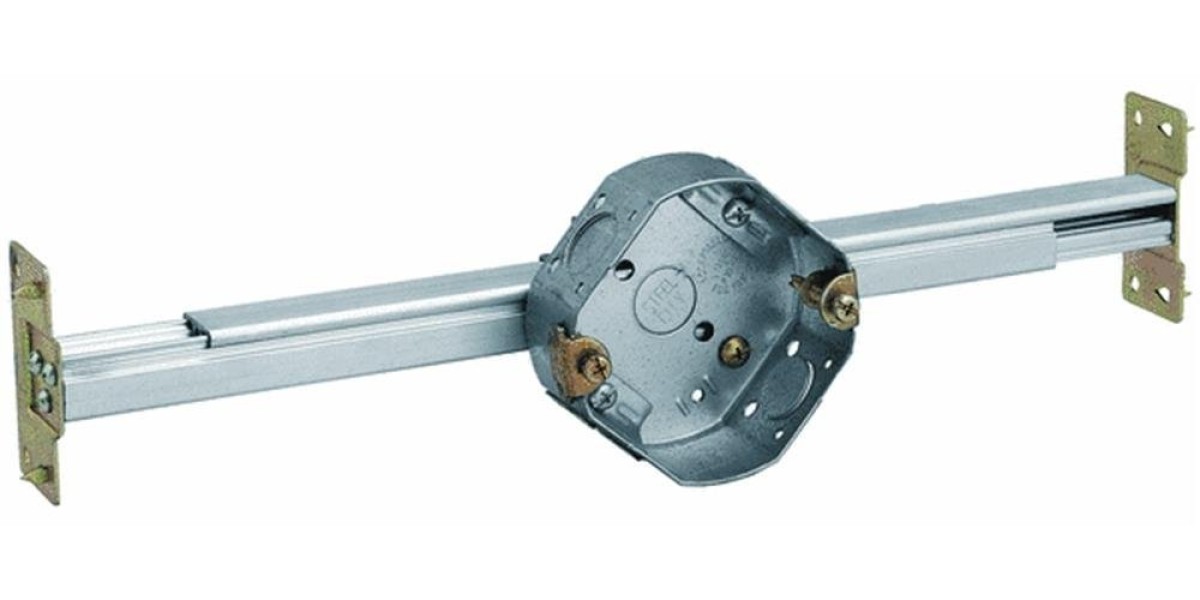When installing a ceiling fan, many homeowners focus on the fan itself—its size, design, and features. However, one of the most overlooked yet critical components in the installation process is the mounting box. Without a secure and properly rated mounting box, even the best ceiling fan can become a hazard.
Understanding the role and importance of the ceiling fan mounting box can help prevent accidents, ensure long-term stability, and protect your home’s electrical system.
Why the Mounting Box Matters
Ceiling fans are heavy and dynamic. Unlike a light fixture, they generate continuous motion. This creates vibration and torque that can strain the mounting system. A standard electrical box not designed for ceiling fans is not built to handle this kind of stress.
A ceiling fan mounting box, however, is engineered specifically for the job. It offers:
Load-bearing strength for the fan’s weight
Reinforced attachment to ceiling joists
Compatibility with fan-rated electrical components
Fire safety compliance by meeting local code standards
Without a proper box, the fan may wobble, become loose over time, or even fall—posing serious safety risks.
Types of Ceiling Fan Mounting Boxes
Not all mounting boxes are created equal. The right box depends on your ceiling type, fan weight, and installation location. Common options include:
1. Metal Fan Boxes with Brace
Ideal for retrofits where access from above isn’t available. These boxes use an expandable brace that mounts between ceiling joists. They're rated to support heavy fans and fixtures.
2. Plastic Fan Boxes
Lightweight but reinforced for fan support. Best used in new construction where direct attachment to framing is possible.
3. Pancake Boxes
Slim, round boxes for low-clearance installations. Only use fan-rated versions for safety.
Each of these must be explicitly rated for ceiling fan use. Look for labels that indicate fan support and check for UL certification.
Features to Look For
When choosing a ceiling fan mounting box, consider the following:
Weight Rating: Ensure the box can support the weight of your fan. Many are rated up to 70 lbs or more.
Mounting Bracket Type: Some have adjustable braces, others rely on direct screws into wood joists.
Material: Steel offers maximum strength; plastic is lighter and corrosion-resistant.
Depth and Diameter: Deeper boxes allow easier wire connections.
Also, check your local building codes, which may have specific requirements for ceiling fan installations.
DIY Installation Tips
If you're planning a DIY installation, here are a few tips to keep in mind:
Turn off power before beginning any electrical work.
Inspect existing boxes—most light fixture boxes are not fan-rated. Replace if unsure.
Use fan-rated hardware, including screws and support brackets.
Double-check stability after installation. The fan should not move or shift under gentle pressure.
Test wiring and balance blades to prevent wobbling.
If you're uncertain about the wiring or support, it’s best to consult an electrician.
Common Mistakes to Avoid
Even experienced DIYers can run into trouble. Avoid these pitfalls:
Using a light fixture box instead of a fan-rated one
Mounting the box only to drywall or ceiling board (never strong enough)
Ignoring fan manufacturer recommendations
Failing to check that the brace is properly expanded and secured
Taking shortcuts can result in dangerous outcomes. The mounting box is not a place to compromise.
When to Upgrade Your Mounting Box
If your home is older or you’re replacing an outdated ceiling fixture with a fan, it’s likely the existing box isn’t rated for fans. Signs you need to upgrade include:
A plastic box not labeled for fan use
No visible mounting brace or joist support
Wobbling or loosening of the existing fixture
Upgrading to a certified ceiling fan mounting box ensures your installation meets modern safety standards and gives you peace of mind.
Conclusion
The foundation of a secure and reliable ceiling fan isn’t just in the motor or blades—it’s in how it’s mounted. A quality ceiling fan mounting box makes all the difference between a successful project and a potential safety issue.
Investing in the right box ensures your fan runs smoothly, quietly, and safely for years. Whether you’re upgrading a room, enhancing comfort, or just tackling your next DIY project, start with a solid foundation—and that begins in the ceiling.








